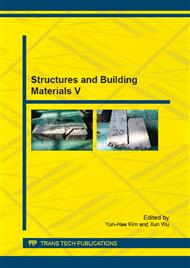p.143
p.148
p.154
p.160
p.166
p.173
p.179
p.185
p.190
Experimental and Numerical Analysis on the Bonding Performance of GFRP Bolts
Abstract:
By pull-out tests between GFRP bolts and concrete, the influence of the diameter and surface shape of GFRP bolts on the bonding performance was studied. By ANSYS analysis, the effects of anchorage length, diameter, geotechnical parameters and prestress on the bonding performance were studied. The experimental and numerical analysis results show that: with the increase of bolt diameter, the bonding strength of bolts decrease and the slippages increase. The bigger the parameters of rock-soil like modulus of elasticity, cohesion strength and internal friction angle are, the better is the bond behavior and the smaller is the slippage. The prestress plays an important role in the rock stability and the restriction of deformation. With the enhancement of the prestress of bolts, the peak shear stress increases but the effective anchorage length nearly stays the same.
Info:
Periodical:
Pages:
166-172
Citation:
Online since:
July 2015
Authors:
Keywords:
Price:
Сopyright:
© 2015 Trans Tech Publications Ltd. All Rights Reserved
Share:
Citation:


